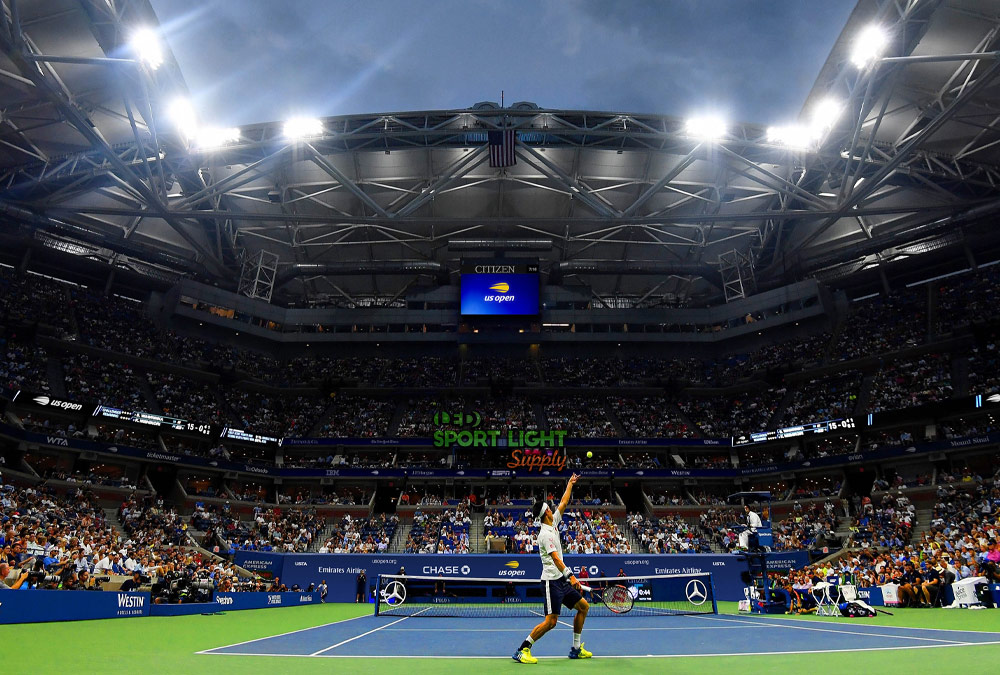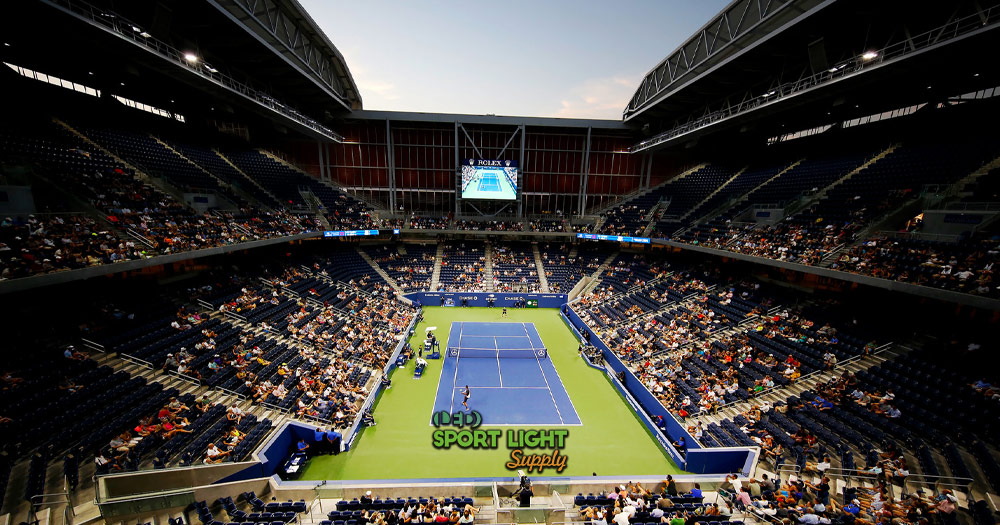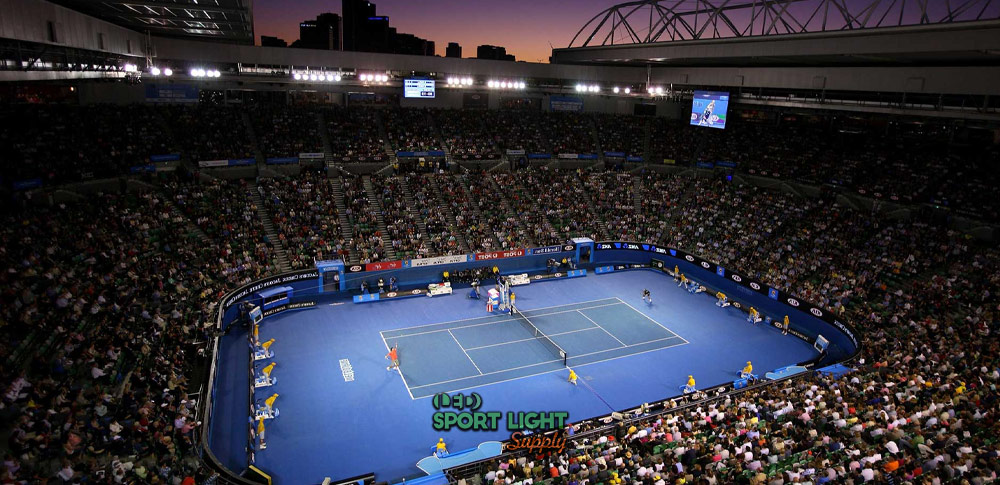Table of Contents
ToggleUnderstanding IES and USTA Standards for Tennis Court Lighting
Overview of Lighting Standards
The lighting standards set by the United States Tennis Association (USTA) and the Illuminating Engineering Society (IES) vary depending on the level of play and the size of the venue. These standards are designed to ensure that lighting is adequate for visibility and minimizes light leakage, providing optimal coverage for the court. For larger stadiums, more light poles are required compared to smaller venues to meet these standards.
IES Lighting Recommendations
The IES provides expert guidelines on the lighting necessary for tennis courts, applicable to both indoor and outdoor settings. These guidelines are specific to different levels of play, including professional, semi-professional, and high school tennis events. The IES emphasizes the importance of consistent light distribution across the court to facilitate clear visibility of the tennis ball and ensure players can navigate the court effectively.
USTA Lighting Requirements
The USTA enforces strict lighting standards tailored to the professional level of play. These standards include precise recommendations for lighting intensity and distribution to maintain high visibility and performance standards on the court. The combination of IES and USTA standards establishes a universal benchmark for the minimum lighting levels required for tennis courts.

Foot Candles in Tennis Court Lighting
Foot candles measure the amount of light falling on a surface and are a traditional method of assessing lighting intensity. This measurement indicates how well a court is illuminated, which is crucial for clear visibility of the tennis ball during play. The goal is to achieve uniform lighting coverage across the court to prevent any loss of visibility.
For night play, foot-candle levels are adjusted to mimic daylight conditions. This adjustment is crucial for both player performance and camera analysis, especially for HDTV cameras used in professional settings. Foot candles are then converted into lumens, which are applied to modern lighting units. Recent advancements have seen the replacement of older lighting systems with high-intensity LED lights. These new lighting systems offer improved management of foot-candles, better light saturation, and enhanced color temperature.
Lighting Requirements for Different Court Classes
The following table outlines the average lighting requirements for different classes of tennis courts:
| Court Class | Required Foot Candles |
|---|---|
| Professional Level Play | 125 foot candles |
| College/Challenger Sport | 75-100 foot candles |
| High School/Private Clubs | 50-75 foot candles |
| Recreational | 30-50 foot candles |

Lux Levels for Tennis Court Lighting
Understanding Lux Measurement
Lux measures the intensity of light that falls on a surface, providing insight into how well an area is illuminated. Unlike lumens, which measure the total amount of light emitted by a source, Lux focuses on the level of light necessary to see objects clearly in various conditions. Lux is crucial for creating the right ambiance for different viewing needs. For example, 200 Lux offers a comfortable, slightly intimate lighting level, while 400-500 Lux is similar to office lighting, providing a well-lit environment suitable for detailed work.
For activities requiring precise visibility, such as surgical procedures, 600-750 Lux is ideal. In contrast, 1000-1250 Lux provides detailed illumination, making it suitable for professional sports settings where clear visibility of fast-moving objects is essential.
Lux Levels for Tennis Courts
The following table outlines the Lux levels required for different classes of tennis courts. These levels ensure appropriate lighting for various levels of play, from recreational to professional:
| Court Class | Horizontal Lux | Vertical Lux |
|---|---|---|
| Professional Level Play | 1000-1250 Lux | 500 Lux |
| College/Challenger Sport | 600-750 Lux | 300 Lux |
| High School/Private Clubs | 400-500 Lux | 200 Lux |
| Recreational | 200-300 Lux | N/A |

Lighting Uniformity for Tennis Courts According to IES and USTA Standards
Importance of Lighting Uniformity
Lighting uniformity is crucial for ensuring that every section of a tennis court is illuminated consistently. This prevents dark spots and uneven lighting that can affect gameplay. Uniformity is measured using specific ratios to assess how well light is distributed across the court. The IES and USTA have set standards for uniformity to ensure optimal playing conditions.
Uniformity Levels for Different Court Classes
Uniformity is rated based on the ratio of the minimum light level to the average light level across the court. The following table outlines the uniformity requirements for various classes of tennis courts:
| Court Class | ITF Uniformity | USTA Uniformity | Lux Range |
|---|---|---|---|
| Professional Level Play | ≥ 0.7 | 1.5 | 700-1000 Lux |
| College/Challenger Sport | ≥ 0.7 | 1.5 | 700-1000 Lux |
| High School/Private Clubs | ≥ 0.5 | 2.0 | 200-400 Lux |
| Recreational | N/A | N/A | N/A |
Uniformity levels are adjusted to ensure that each area of the court receives consistent lighting, which is essential for meeting the standards set by the IES and USTA. This precision is especially important for professional and semi-professional levels, where consistent lighting is critical for fair play.
Glare Control in Tennis Court Lighting
Glare control is vital for maintaining comfort and visibility for both players and spectators. The glare rating (GR) measures the intensity of brightness and its impact on visibility. GR ratings are on a scale from 1 to 9, with lower numbers indicating higher levels of glare.
The following table shows the recommended glare ratings for different classes of tennis courts:
| Court Class | Recommended GR Rating | Light Color Temperature |
|---|---|---|
| Professional Level Play | 50 | 4000K |
| College/Challenger Sport | 50 | 4000K |
| High School/Private Clubs | 55 | 2000K |
| Recreational | N/A | N/A |
For professional and semi-professional levels, the glare rating is typically set to 50 using 4000K light sources, which provides a balanced brightness that minimizes discomfort. For high school courts, a GR rating of 55 with 2000K light sources is acceptable, reflecting a slightly higher tolerance for glare.
Color Rendering Index (CRI) Requirements
The Color Rendering Index (CRI) measures how accurately lighting displays colors compared to natural light. CRI values range from 0 to 100, with higher values indicating better color rendering. Different classes of tennis courts require varying CRI levels:
| Court Class | CRI Rating |
|---|---|
| Professional Level Play | 80 |
| College/Challenger Sport | 65 |
| High School/Private Clubs | 60 |
| Recreational | Not Specified |
Professional tennis courts require a CRI rating of 80 to ensure accurate color representation, which is essential for high-level play and television broadcasts. College and semi-professional courts generally have a CRI of 65, while high school courts typically have a CRI of 60. Recreational courts do not have a specified CRI requirement.
Conclusion
Adhering to the lighting standards set by the IES and USTA ensures that tennis courts are optimally illuminated to meet the needs of players at various levels. Proper lighting uniformity, glare control, and color rendering are crucial for maintaining visibility, comfort, and performance. By meeting these standards, whether for professional, collegiate, or recreational play, tennis courts can provide a consistent and high-quality playing environment, enhancing both the gameplay experience and visual clarity.
